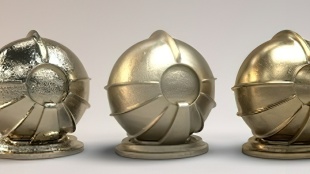您需要 登录 才可以下载或查看,没有账号?注册

x
本帖最后由 秋令6689 于 2022-5-17 12:04 编辑
The Teal Wheel Tavern – Environment Breakdown – Lotte de Brabander 卡通建筑-蓝绿色车轮酒馆 – 环境分解 – 乐天布拉班德-双语
Introduction Hello! I’m Lotte de Brabander and I am a 3D Environment Artist from The Netherlands. I started my adventure into 3D when I got accepted at ‘’Breda University of Applied Sciences ‘’ where I studied Game art. 介绍 你好!我是Lotte de Brabander,我是来自荷兰的3D环境艺术家。当我被“布雷达应用科学大学”录取时,我开始了我的3D冒险,在那里我学习了游戏艺术。 I realized fairly quickly during my study that creating environments and world-building is what I am passionate about. It brings back memories of when I would sit beside my brother, watching him play games such as ‘’Rayman 2’’ and ‘’The Legend of Zelda: Twilight Princess.’’ I was totally captivated by the world around them characters that he’d play. 在学习期间,我很快意识到创造环境和世界建设是我热衷的。它让我想起了我坐在哥哥旁边,看着他玩《雷曼2》和《塞尔达传说:暮光公主》等游戏。我完全被他扮演的角色周围的世界所吸引。 Fast forward to last year when I finally graduated! I didn’t quite feel ready to enter the game industry yet though. This is where my 3D recreation of ‘’The Teal wheel Tavern’’ by comes in. 快进到去年我终于毕业了!不过,我还没有准备好进入游戏行业。这就是我对(https://www.artstation.com/jtuffan)的“The Teal wheel Tavern”的3D再现之处。
My goals for this project I had a few goals/reasons in mind to why I wanted to work on this project. One of them is being insecure about entering the industry right after university. My portfolio was missing something, which I wanted to fix before sending out job applications. 我对这个项目的目标 我有几个目标/原因,为什么我想在这个项目上工作。其中之一是对大学毕业后进入这个行业没有安全感。我的投资组合缺少一些东西,我想在发送工作申请之前修复它。 I also had knowledge gaps to fill. I had never worked with trim sheets and really wanted to try that out, especially since I want to pursue environment art. 我也有知识空白需要填补。我从未使用过装饰板,真的很想尝试一下,特别是因为我想追求环境艺术。 To ensure that I would achieve my goals I ended up signing up for a 5-month long mentorship with from ‘’The mentor Coalition.‘’ It was such a great decision. Without his advice, feedback and help the project wouldn’t be where it is right now! 为了确保我能实现我的目标,我最终与“导师联盟”的点卡斯.安农齐亚塔(Lucas Annunziata) 进行了为期5个月的指导。这是一个伟大的决定。没有他的建议,反馈和帮助,项目就不会有现在的样子! Software 软件 The software I used for this project: 我用于这个项目的软件: Blender: For modeling and Uv’ing. Blender:用于建模和 Uv'ing。 Substance Painter and Designer: For texturing. Substance Painter and Designer:用于纹理。 ZBrush: For very minor sculpting of some assets. ZBrush:用于对某些资产进行非常小的雕刻。 Unreal Engine 5: To assemble the scene. Unreal Engine 5:组装场景。 References When I start with a project I generally look for inspiration first. With this one, I already knew that I did not want to stray too far from the concept, so I did not feel the need for a ton of reference material. In the picture below I condensed some of the references I gathered so you can have an idea of what I look for. Depending on the project; I look for references from other games, projects, illustrations and real-life (google street-view can be helpful sometimes too!). 引用 当我开始一个项目时,我通常会首先寻找灵感。有了这个,我已经知道我不想偏离这个概念太远,所以我不觉得需要大量的参考资料。在下图中,我浓缩了我收集的一些参考资料,以便您可以了解我寻找的内容。取决于项目;我从其他游戏,项目,插图和现实生活中寻找参考资料(谷歌街景有时也会有所帮助! For this one, I mainly looked at certain games and projects to get an idea of the level of detail with the camera angle and images that use certain techniques that I was interested in trying out. 对于这个,我主要查看了某些游戏和项目,以了解使用我有兴趣尝试的某些技术的图像的相机角度和图像的细节水平。 Setting up the project When setting up I usually do some basic things like creating an asset list to define the scope, blocking out the big shapes and creating small breakdowns to further define what is important to the scene. 设置项目 在设置时,我通常会做一些基本的事情,例如创建资产列表来定义范围,阻止大形状并创建小的细分以进一步定义对场景重要的内容。 Something I struggled with was getting the right camera view when I worked on the block-out, thankfully I found out about . It’s a handy tool to calculate the camera settings and if you use Blender you can instantly create the camera with those settings using their plugin! 当我处理块时,我挣扎的事情是获得正确的相机视图,谢天谢地,我发现了(https://fspy.io/) 。这是一个方便的工具来计算相机设置,如果您使用Blender,您可以使用他们的插件立即使用这些设置创建相机! Below is an example of how I broke down some of the tileables and trim sheets. It’s pretty straightforward, but by visualizing these things you create more clarity for yourself. 下面是我如何分解一些可平铺和修剪纸张的示例。这很简单,但是通过可视化这些东西,您可以为自己创造更多的清晰度。 Here is also a work in progress gif that can show you a bit of the order in how/when I approach the scene as a whole. 这里也是一个正在进行的工作gif,可以向您展示一些我如何/何时接近整个场景的顺序。 Materials 材料 The materials and textures that I have created all had to be readable from a distance while still showing some form of variation with the colors. What worked for me was to keep the shape language simple and not blending in the colors in a soft way, but instead with a harsh line. 我创建的材料和纹理都必须从远处可读,同时仍然显示颜色的某种形式的变化。对我来说,有效的方法是保持形状语言简单,而不是以柔和的方式混合颜色,而是用刺耳的线条。 It is tempting to add a lot of detail or making it look really pretty and complex, but it does not always benefit the scene that you are working on. In my case a lot of detail only hurt the scene by decreasing the readability and giving it a mushy look. So by simplifying the material it might look less impressive, but don’t be discouraged by that! The most important thing is that it works and looks good in your scene. 添加大量细节或使其看起来非常漂亮和复杂是很诱人的,但它并不总是有利于您正在处理的场景。在我的情况下,很多细节只会通过降低可读性并使其看起来模糊来伤害场景。因此,通过简化材料,它可能看起来不那么令人印象深刻,但不要因此而气馁!最重要的是,它在你的场景中工作和看起来不错。 So here you can see a close up of the wood material that I made and one with a comparison of my scene and the concept. 所以在这里你可以看到我制作的木质材料的特写镜头,以及一个比较我的场景和概念的特写。 In the images below I will show you some of the more important steps in the graph that I took to make a texture that worked for my scene. 在下图中,我将向您展示图表中一些更重要的步骤,这些步骤是我为制作适用于我的场景的纹理而采取的。 The base shape [blue] Is pretty straightforward. Just play around with the brick generator to get the shapes you desire. 基本形状 [蓝色] 非常简单。只需使用砖砌发生器即可获得所需的形状。 To create a less uniform look with the lines you can then plug it into the bevel node. Do it a few times and make sure to use a mask that will indicate which plank is affected by which bevel. 要使用线条创建不太均匀的外观,然后可以将其插入斜角节点。做几次,并确保使用口罩,以指示哪个木板受到哪个斜角的影响。 To create some height difference in the planks you can use the flood-fill to gradient and layer those a few times. I blend them in the end with a multiply since it just gave a nicer affect. A bit more subtle compared to the blend at 50% 要在木板中创建一些高度差,您可以使用泛光填充来渐变和分层几次。最后,我用乘法将它们混合在一起,因为它只是给了更好的效果。与50%的混合相比,更微妙一些 The noise was done with slope blurring a crystal and fluid noise, which was then put into the flood fill mapper node as seen in the image below. Just play around with the parameters in there until you get a nice result. I think it is a really fun node to work with! To remove the gaps [purple] between the planks you can use this awesome . 噪声是通过斜率模糊晶体和流体噪声完成的,然后将其放入洪水填充映射器节点中,如下图所示。只需在那里玩弄参数,直到得到一个不错的结果。我认为这是一个非常有趣的节点!要消除木板之间的间隙[紫色],您可以使用这个令人敬畏(https://share-legacy.substance3d.com/libraries/2119)自定义膨胀/侵蚀节点。 So here you can see the trim sheet that I used which was made based on the floor plank material, including the painted version. I textured about 50% of the entire scene with this trim. If you have a material that you use often then you might want to look further into using a trim sheet, it will make your life so much easier. 所以在这里你可以看到我使用的装饰板,它是基于地板材料制成的,包括涂漆版本。我用这个修剪纹理化了整个场景的50% 左右。如果你有一种你经常使用的材料,那么你可能需要进一步研究使用装饰板,它会让你的生活变得更加轻松。 Wall Models I struggled quite a bit with the walls. I’m not entirely sure why it was such a challenge for me, but I’m happy how they ended up! I wanted to use tessellation at first but since I worked in UE5 that was not going to happen. In the end I made the texture in Substance Designer and UV’ed the wall pieces seamlessly. I then cut out some stone pieces and extruded them to give the model more depth. 墙体模型 我在墙上挣扎了不少。我不完全确定为什么这对我来说是一个挑战,但我很高兴他们是如何结束的!起初我想使用曲面细分,但由于我在UE5中工作,这不会发生。最后,我在Substance Designer中制作了纹理,并无缝地对墙壁进行了UV处理。然后,我剪出一些石块并挤压它们,以使模型更具深度。 I gave it a simple vertex paint to add some moss to it and a bit of a gradient. 我给了它一个简单的顶点油漆,给它添加一些苔藓和一点渐变。 The gradient method I got from and I highly recommend checking out his content, you can learn so much from him! 我从(https://youtu.be/4NqpGPjMi8I)的视频中获得了渐变方法,我强烈建议您查看他的内容,您可以从他那里学到很多东西! Lighting The lighting was something that also took a lot of iterations. Working with Lumen was really fun though. I tried different lighting set-ups [see WIP gif from earlier] since I wasn’t sure how to reach the same feeling as the concept. Most of them felt too dark, so I started experimenting with making the scene lighter. That completely made sense, since the concept works with highlights rather than shadows. 照明 照明也需要大量的迭代。不过,使用Lumen真的很有趣。我尝试了不同的照明设置[参见之前的WIP gif],因为我不确定如何达到与概念相同的感觉。他们中的大多数人都觉得太暗了,所以我开始尝试让场景更亮。这完全有道理,因为这个概念适用于高光而不是阴影。 I still ended up using some more shadow compared to the concept but kept it to a minimum. What I did to have more control over the shadow was having two rectangular lights, one that casts a shadow and one that doesn’t and has them basically layer each other. This way I could control the amount of shadow by simply playing with the intensity of the light. 与概念相比,我最终仍然使用了更多的阴影,但将其保持在最低限度。为了更好地控制阴影,我所做的是有两个矩形的光,一个投射阴影,另一个不投射阴影,并且它们基本上相互分层。通过这种方式,我可以通过简单地玩弄光线的强度来控制阴影的数量。 To get the soft look I simply upped the bloom for the entire scene in the post-processing. 为了获得柔和的外观,我只是在后期处理中提高了整个场景的绽放效果。 Adding details 添加详细信息 My favorite part of working on a project like this is adding detail to make it feel less static. Just making your foliage wiggle a little bit with the ‘’smallgrasswind’’ node or having some clouds move over your buildings can add just that little ‘’something’’ that you might feel is missing. They don’t have to cost much of your time either. It really doesn’t have to be difficult and complex, anything small can already lift your scene up! 在这样的项目中,我最喜欢的部分是添加细节,使其感觉不那么静态。只是让你的树叶在“小草风”节点上摆动一下,或者让一些云层在你的建筑物上移动,可以增加你可能觉得缺少的那一点点“东西”。它们也不必花费您太多的时间。它真的不必是困难和复杂的,任何小的东西都可以提升你的场景! Take the cloud shadows as an example. It is a simple light function that I put in my directional light. For the texture, I use a simple clouds2 tiling texture with the ability to toy around with the contrast of the shadows. I got this from , which I highly recommend watching if this is something you’d like to add. 以云阴影为例。它是一个简单的光功能,我把它放在我的定向光中。对于纹理,我使用简单的clouds2平铺纹理,能够玩弄阴影的对比度。我从(https://www.youtube.com/watch?v=R2Q_2Ilh5yQ)的教程中得到了这个,如果这是你想添加的东西,我强烈建议你观看。 Another way of a similar set-up is to use the ‘’panner part’’ of the cloud graph as a way to give the coal some more motion with the emissive intensity. 类似设置的另一种方法是使用云图的“平移器部分”作为一种方式,使煤在发射强度下有更多的运动。 You can also add a really simple flicker light function for your candles or fire! It’s a light function that you can put on a point light and it gives you the illusion of well. Flickering lights! Alternatively, you can add a ‘’simplegrasswind’’ node and bump up the emissive to the flame of a candle and create a quick candle effect. Below you can see how easy it is to create a flicker function. 您还可以为蜡烛或火添加一个非常简单的闪烁灯功能!这是一个灯光功能,你可以把它放在一个点光灯上,它给你一个很好的错觉。闪烁的灯光!或者,您可以添加一个“simplegrasswind”节点,并将发射值提升到蜡烛的火焰中,并创建快速蜡烛效果。您可以在下面看到创建闪烁函数是多么容易。 And also below, how I added it to the candle model: 同样在下面,我如何将其添加到蜡烛模型中: Conclusion Working on this project has been so much fun. There are a million things that I would approach differently in my next project, but that only shows how much I have learned with this one! For now, I’m happy that I managed to finish it. 结论 在这个项目上工作非常有趣。在我的下一个项目中,我会以不同的方式处理一百万件事情,但这只能说明我从这个项目中学到了多少!现在,我很高兴我设法完成了它。
| 







 评分
评分









